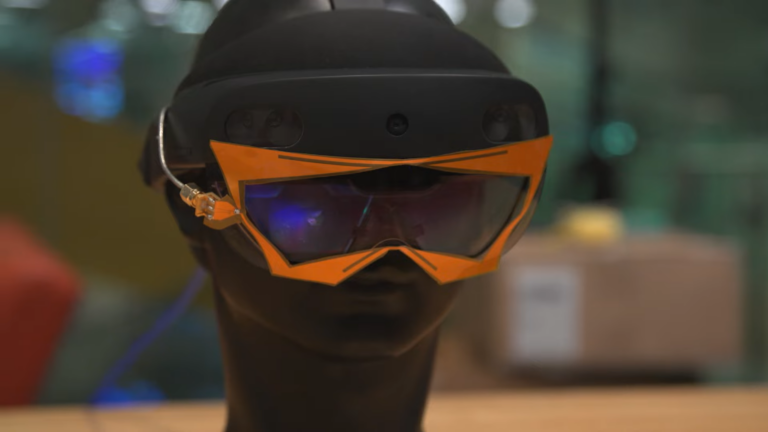You might not need to be Superman to have “X-ray vision” anymore. With the right state-of-the-art equipment, even Joe Average can see through solid objects.
A new paper describes the X-AR headset, which is the result of modifications made by MIT researchers to the Microsoft HoloLens. The wearer is, in a sense, granted the ability to see through objects.


Lucky for us, it doesn’t actually emit any potentially dangerous X-rays. Actually, it broadcasts radio waves in search of objects equipped with radio frequency identification (RFID) tags. The holographic representation of these objects then materializes, making it, in theory, easier to find.
“Our whole goal with this project was to build an augmented reality system that allows you to see things that are invisible — things that are in boxes or around corners,” said senior author Fadel Adib, an associate professor of electrical engineering and computer science at MIT, in a press release.
Warehouse Power-up
The comic book’s use of X-ray vision is far more dramatic than the actual purpose of X-AR.
The basic premise is that those working in retail and warehouses could benefit greatly from the technology in aiding them in locating specific items amongst vast stockpiles. In the first step, the user would access the item’s information via a drop-down menu. Even if the item is buried under a pile of boxes or other debris, the location will be marked with a sphere and a trail of footsteps will be projected on the ground to guide you to it.
In tests, the X-pinpointing AR’s accuracy was 96%, allowing it to direct users to the right item with a distance of only four inches.
It’s hypothesized that if all of an employee’s uniforms were thrown into one massive pile, he or she would have an easier time finding what they need. The researchers also believe that X-AR could aid technicians in selecting the proper tool or parts for the task at hand.
Augmenting AR
As it stands, the X-AR probably doesn’t have the range (currently ten feet) or speed for efficient use, but it could still mark a significant step forward for AR technology. Abid says, “today, there is nothing like this.”
“This paper takes a significant step forward in the future of AR systems, by making them work in non-line-of-sight scenarios,” added Ranveer Chandra, the managing director of industry research at Microsoft, who was not involved in the study.
Despite its obvious novelty, we can’t help but picture a dystopian future in which workers are forced to use AR headsets in order to meet ever-increasing demands for productivity.




